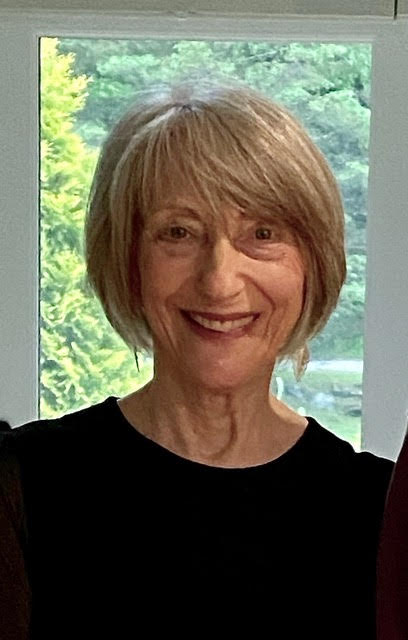By Sharon Medoff Picard, LCSW
If you’re hoping for some insider secrets on how to get a paper published in a journal, I wish I had a few. But, this entry isn’t a primer about writing a paper. It’s about the process of submitting a paper.
Like many, I’ve acquired a few computer skills over the years. I was even my husband’s tech-support when he was working remotely and deprived of an on-site tech professional. Given what he knows and what I know, that doesn’t put me high on the food chain, but we managed.
Whatever the benefit of acquired skill, I remain afflicted with the fixed belief that any computer screw-up will unleash a series of events leading to nothing less than ruin. Of my project, certainly—and possibly even of my entire mainframe. So, since the electronic highway is the only route nowadays, my decision to submit an article to Psychoanalytic Dialogues was complicated by my wish to avoid falling down that rabbit hole.
Here I offer—for your consideration (and amusement)—a brief, edited sampling of emails exchanged as I attempted to master the submission process.
December 2020
Dear Sharon: You had the right email address but, papers now need to be submitted via ScholarOne.
You’ll need to create an account and follow the directions to submit…
I tried through ScholarOne. And, tried again, flummoxed by their menu and its reminders of long-forgotten multiple choice tests. Months passed. Each time I approached the site, it seemed to taunt me into another kind of submission. Would I really permit myself to be sidelined by this ridiculous paralysis?
June 2021
Dear Editor: I’d like to follow through with submission, but find the ScholarOne site difficult to navigate.
Under ‘Primary/Secondary address’ I’ve tried to enter my own address and see that the name of an institution is required. ..I’m unable to type in the institute where I’m affiliated and my own address because the address of the institute gets auto-filled as soon as the name is typed in. ..
June 2021
Dear Sharon: Please don’t sweat such details. ScholarOne insists on these things, but we don’t pay them much attention.
Finally, an automatic response, ‘Successfully submitted online’. Along with a reminder that I’d be unlikely to hear about the status of the paper for up to six months.
September 2021
Dear Sharon: I’m happy to tell you that after working on some minor revisions, we’d like to publish your article in our journal. If you decide to proceed…I’ll read your revised draft, so your paper won’t have to go through the full review process again….
Enter the fascinating world of revisions. I’m not sure what I expected upon opening the now-familiar site and reading the Editorial Board Members’ reviews. Perhaps, some version of a blue book slashed with a disapproving red pen? In fact, the comments were riveting. When do we have the luxury of getting what amounts to the wisdom of three professionals, each writing a short paper about your paper? Each from a different perspective; each posing different questions.
However, electronic purgatory would continue as I fulfilled the Editorial Board’s request for revisions.
September 2021
Dear Sharon: To submit the revision go to….and enter your Author Center where you will find your manuscript listed under ‘manuscripts with decisions’. Under ‘Actions’ click on ‘Create a Revision’.…
October 2021
Hi, J: (I no longer address these notes to Dear Editor as we are now both on a first-name basis).
My revision is complete.
However, when I clicked ‘save and submit’, a red box popped up telling me that I hadn’t replied to a series of questions, many that were answered during the original submission.
For the moment, I took the coward’s way out and just hit ‘save’ to preserve what I’d already done and to avoid doing something irreversible. ..
October 2021
Hi, Sharon: Here are the basic instructions….Let me know what issues you’re running into.
October 2021
Dear J: (Here I outline a series of nettlesome questions). ..Your help (and your patience) are much appreciated. It’s definitely easier for me to write a paper than to submit a paper!
I received a patient reply to my questions, enabling me to proceed. Followed shortly by another automatic response: ‘Successfully submitted online.’
Relief. Again.
December 30 2021
Dear Sharon: I’ve given your revised paper a careful review…and, we are accepting your article for publication in Psychoanalytic Dialogues.
Great news.
But, we’re not finished yet. I must provide a response to the discussant. So the challenge continues.
I couldn’t help but wonder how protracted exposure of my ineptitude might mark me as unfit for inclusion in a respected journal. And, I seesawed between the wish to proceed and the need to avoid any action that would further bring to light my shortcomings. Readers of this blog—analysts and analytically-oriented therapists all—no doubt you’re thinking that I’m displacing anxiety about the written product (or a darker something-else) to anxiety about my computer skills. I don’t think so. I was fully prepared to fill a manila envelope and stand in line at the Post Office or to email an attachment. I was certainly uncomfortable that exposure of my technical limitations would have a spillover effect and undermine my credibility across the board. Maybe mark me as not just one who’s closed a practice but who’s generally obsolescent.
I appreciated the reviews by three Editorial Board members, which displayed careful scrutiny of my work. Their generous comments were constructive without being harsh and incorporating their observations made the paper better. Some resonated with reactions of my own that were barely bubbling under the surface. And, I’m glad I decided to ignore the angst, to muddle through. It’s a bit ironic that the thing I most felt lacking in the impersonal electronic process was also the thing I found and what finally got me through: human contact to help sort it out.
Sharon Medoff Picard received her Certificate in Psychoanalysis from WCSPP and is a graduate of their Supervisory Training Program. She is a member of Supervisory Faculty and a past Director of the Adult Psychotherapy Training Program (2013-2016). Having closed her practice in 2019, she remains involved in training and supervision. (She is also glad to report that there is life after closing a practice.)


